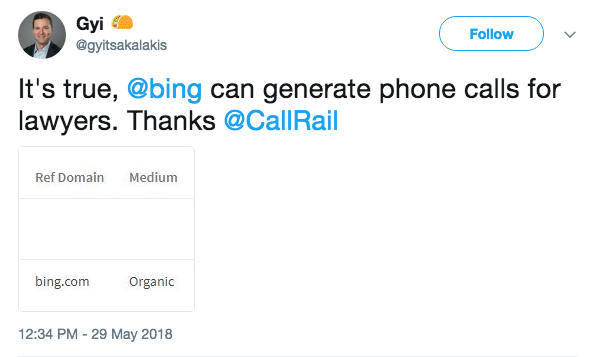We’ve all heard the buzzwords “data-driven marketing” in just about every industry article and every presentation at a marketing event. As tools for marketing attribution data and analytics have become more sophisticated and reliable, companies have come to depend on these numbers to perfect their campaigns, determine what is and isn’t driving leads, and figure out how to lower their cost per lead while increasing overall lifetime value.
In a survey conducted by the Duke University Fuqua School of Business, researchers found that companies plan to increase their marketing budget allocation toward analytics by 198 percent over the next three years. And research shows that when executed correctly, attribution provides efficiency gains of 15 to 30 percent.
Companies like Vineyard Vines have seen some impressive results by using data from their analytics platforms to improve their nurture campaigns and keep their products top-of-mind for customers. For example, by using data and analytics to optimize their holiday campaigns, the company’s revenue per email (RPE) increased by 572 percent.
However, some companies are still struggling with how they use data. The amount of data available can be intimidating, and many marketers don’t know where to start — they suffer from a sort of analysis paralysis.
As the Harvard Business Review reports, “…The effect of analytics on company-wide performance remains modest, with an average performance score of 4.1 on a seven-point scale, where 1=not at all effective and 7=highly effective.”
We have tons of data, but many don’t know the best ways to use it for positive change.
Gyi Tsakalakis is the co-founder of the digital agencies AttorneySync and EPL Digital. AttorneySync works only with law firms and focuses on websites, SEO, SEM, and social. EPL works primarily with bigger brands in the direct response marketing space (lead gen, financial services, education, medical device, and a few others).
As the leader of two agencies, Tsakalakis is acutely aware of how attribution and analytics data affect his bottom line. Attribution data helps agencies prove their value and, in the end, keep more clients and expand existing retainers.
Tsakalakis says that, to him, being data-driven essentially means having numbers to back up the concept that “the money [clients are] spending is turning into more money for them.” Different elements of attribution are important to different agencies and clients, but the idea remains the same: Clients want proof that their agency’s work is benefitting their businesses.
“Ideally, we can report on return on ad spend (ROAS),” says Tsakalakis. “However, that requires our clients to ‘participate in the process.’ And where they won’t or can’t, we fall back on target cost per qualified lead.” Even with potentially limited data, Tsakalakis believes that bringing numbers to the table gives his clients a sense of how his agencies are winning on their behalf.
Accurate attribution data not only proves agencies are doing something right for their clients, but it helps make their own business more efficient as well. In a recent tweet, Tsakalakis called out how many qualified leads use search engines like Bing (even though the majority uses Google) — a reminder that it’s important to not forget them in your search marketing efforts:

Screenshot of a tweet
Better data means better returns on your marketing
Attribution data can also help marketers do their jobs better. Your attribution numbers can tell you which ads aren’t performing, which campaigns are driving the most qualified leads that turn into customers, and which campaigns get a ton of clicks, but very few money-making conversions.
A good attribution strategy can also show you where to invest more organic search efforts, what searcher intent means for your business and industry, where searchers are in the funnel, and how best to optimize your content for searcher needs.
It’s crucial to include call data in your attribution strategy. With cross-device touches leading to more conversions, agencies should focus on a multi-touch and multi-channel attribution strategy. For many businesses, the call is just as crucial in the process as an ad click, a form fill, or any of the other ways users become known leads.
In fact, some would say they are the most crucial — research from Marketing Sherpa and Hubspot indicates that form fill-out leads only convert to customers about 2 percent of the time, in contrast to the 25 to 40 percent of inbound phone calls to local businesses that turn into customers.
In the future (and even now!), attribution data and analytics will be key to solving clients’ biggest issues and determining the best forward-moving strategies for mutual benefit. For agencies, this data will be crucial in proving their value, retaining clients, and expanding their books of business. When used correctly, data and attribution information can help agencies get new clients, keep existing clients, and make more money.
In order to truly become data-driven marketers, agencies and consultants have to determine what data is important and then take action on that data. Whether it’s clicks, calls, or any other form of lead capture, the first step to better marketing strategy is attribution data.
If you’re ready to bring the power of data-driven marketing to your agency, you can start today: Begin your 14-day free trial of CallRail or request a personalized demo.
The post Using attribution data for agencies: Retain clients, earn new ones, and make more money appeared first on CallRail.

